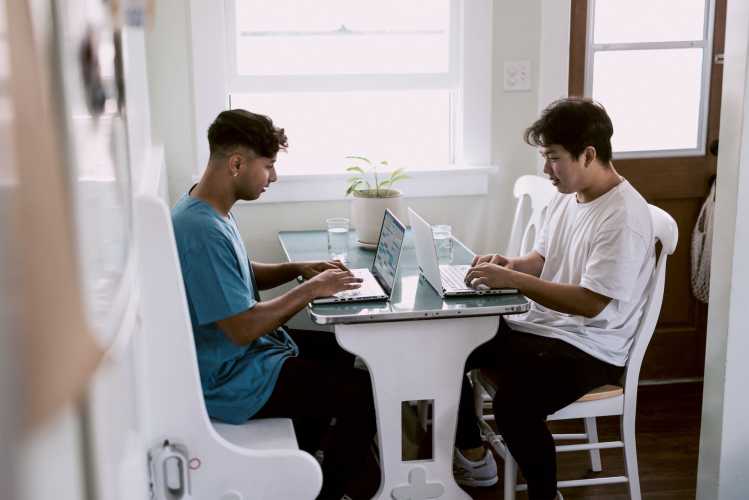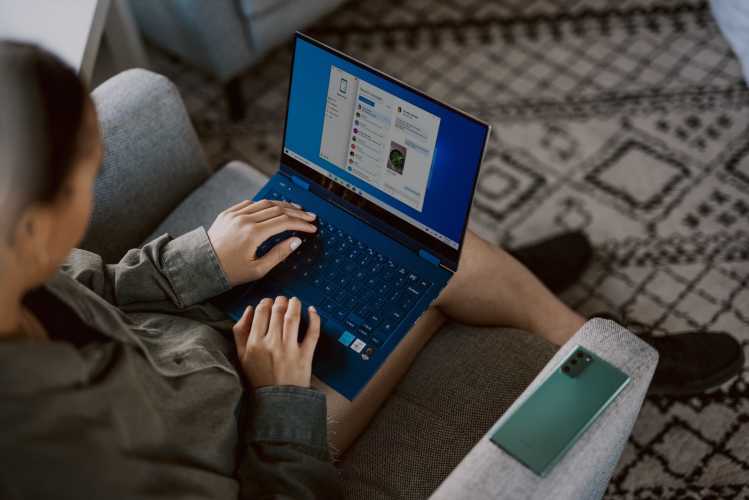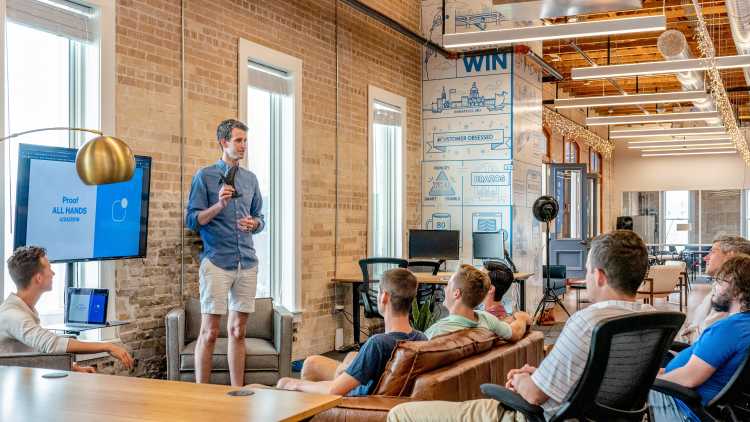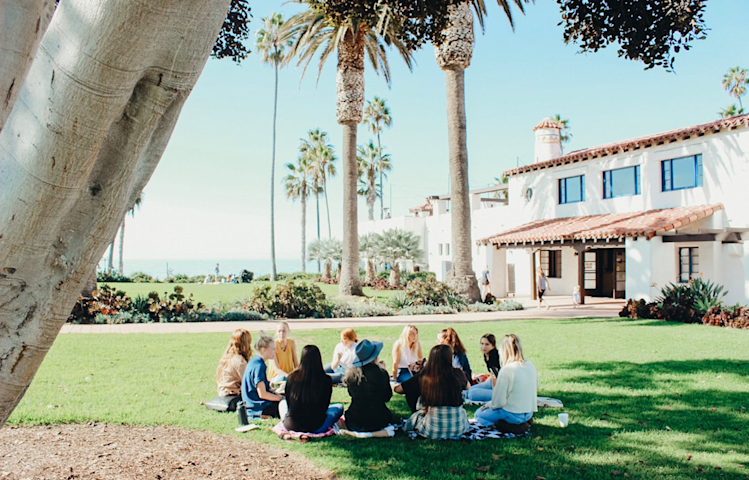Communities & Memberships
The Ultimate Guide to Building an Online Community in 2025
Whether you're starting from scratch or ready to turn your audience into a connected, thriving network, here's how to build an online community.
Author
Mighty Team
Last Updated
October 15, 2025

Ashley Fox was in her early 20s when she did the unthinkable; she quit her 6-figure, Wall-Street job to launch her own business.
Her vision? She’d provide financial education to the 99% of people Wall Street wouldn’t talk to.
The movement was thriving, Empify (EMPower + modIFY), reached over 20,000 people and got picked up by 50+ schools.
And that's when Ashley decided what the next step for the business would be:
She launched an online community.
And her community generated $100,000 of revenue in the first 2 weeks.
Today, The Wealth Builders Community has over 1,000 members–all of them people who didn’t grow up with wealth and want to break the generational cycle of poverty.
Ashley’s story shows the power of an online community.
In fact, 80% of brands that run communties say it has a positive impact on their business and helps them achieve business goals. And every generation says they love joining communities around a brand they care about, with GenX being the highest at 62%.
This means whether you're looking for a powerful brand community, a side hustle, or something just for fun, online communities are unlike anything else.
This ultimate guide to building an online community will teach you what you need to know to get started, from the spark of an idea to your first (paying) members.
What is an online community?
An online community “is a group of people with a shared interest or motivation who meet to inspire, affirm, learn, grow, and form connections with each other.”
Online communities harness the network effect as members direct energy and passion into the community. Hosts direct the conversation and keep everything working, and often moderators as well (many of which are recruited from supermembers).
Unlike social media, online communities go deep, not wide, as a group of people embark on a journey to master something interesting together. The community Hosts work to grow the community, but eventually, the members do too, as they get invested and meet people!
Membership community statistics
Here are some of the numbers we've seen in our paid Mighty Networks that PROVE it's the ultimate business model:
The average community with membership fees charge $48/mo. A community of 1,000 members can earn more than $48,000 A MONTH!
Paid communities earn on top of memberships: things like events, coaching, or courses. 90% of paywalled Mighty Networks are making sales on top of the membership fee.
Only 27% of our top 250 revenue-generating Mighty Networks offer a Free Trial.
82% of paid networks have made a sale in the past 90 days
Some of the top revenue-earning Mighty Pro Networks charge up to $125 per month per Member.
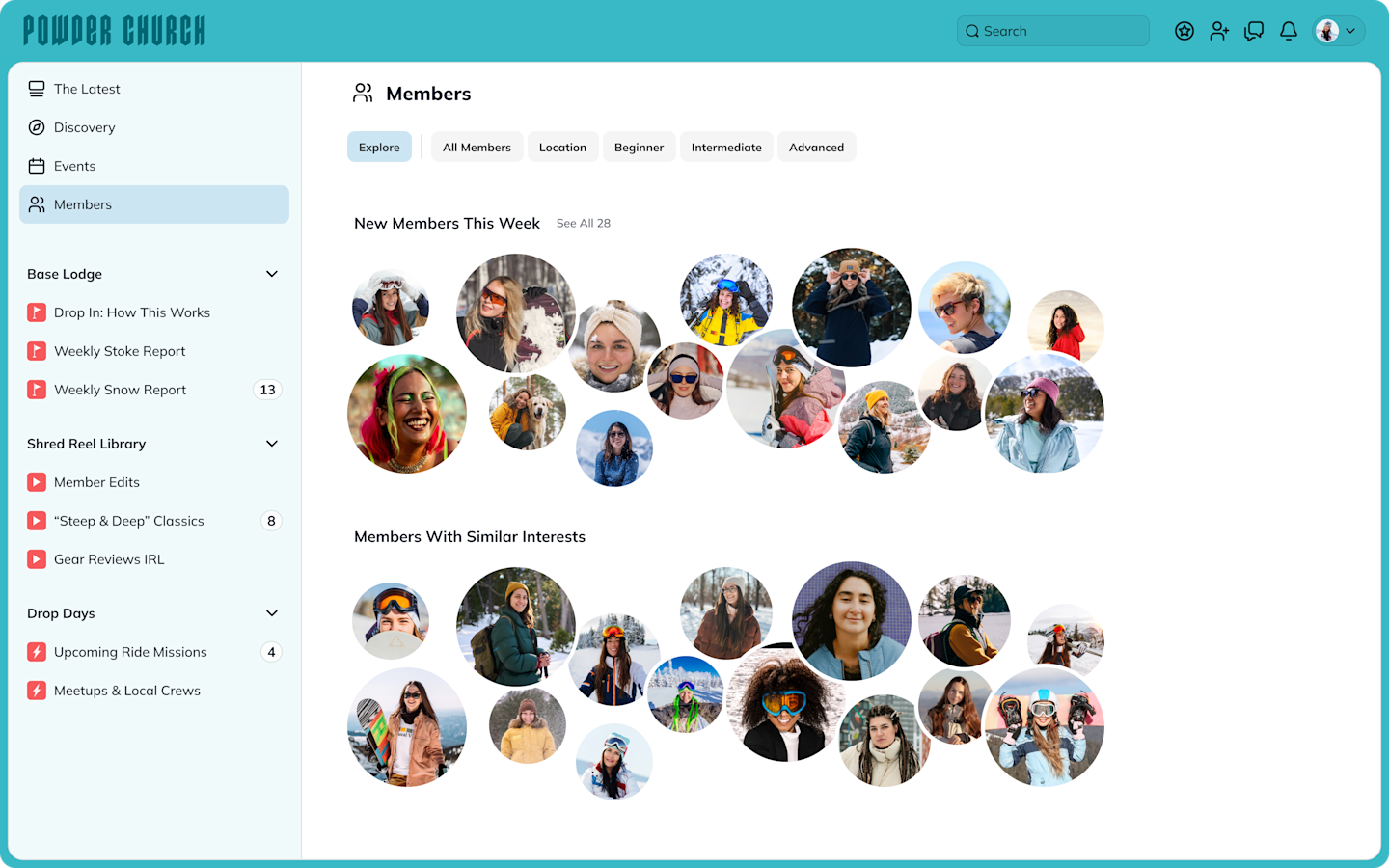
Take our community building masterclass!
Psst! Don't sleep on this! Our CEO, Gina Bianchini, has put together a free masterclass sharing the secrets of building a successful community. Check out the first episode!
9 Steps To Building An Online Community
1. Find your WHY
This part is about your motivation: Why do you want to build a community? What is it that’s going to get you excited about putting the time into this group of people?
A few years back, finding your why was the theme of a best-selling book by Simon Sinek.
When we look at successful communities, it's notable how many of the Hosts are driven by a compelling personal WHY.

For example, Martinus Evans started an Instagram account -@300poundsandrunning - to launch his fitness journey. And he launched a community--The Slow AF Run Club--because he didn't see people who looked like him in traditional fitness. It was a personal vision to create a space for "back of the pack" runners to feel seen and find people like them.
That's a powerful why.
The clearer you are about how your story connects to your community, the more likely you'll be successful.
Here are some questions to help you unlock your why:
For solo community leaders:
What do I spend my time thinking and caring about?
What could I talk about confidently without prep?
What types of people do I love connecting to?
Who can I help? What struggles have I come through that could teach others?
If money didn't matter, what kind of community would I build?
What space to I want to see or create? (Especially if it doesn't exist already)
For brand communities
Why do we exist as a business? Why did we launch in the first place?
What do our founder's or leaders' stories tell us about their drive and vision for the brand?
What transformation do we want our customers to experience? How could we make their lives better?
What do our existing raving customers say they love about us?
What causes do we care about?
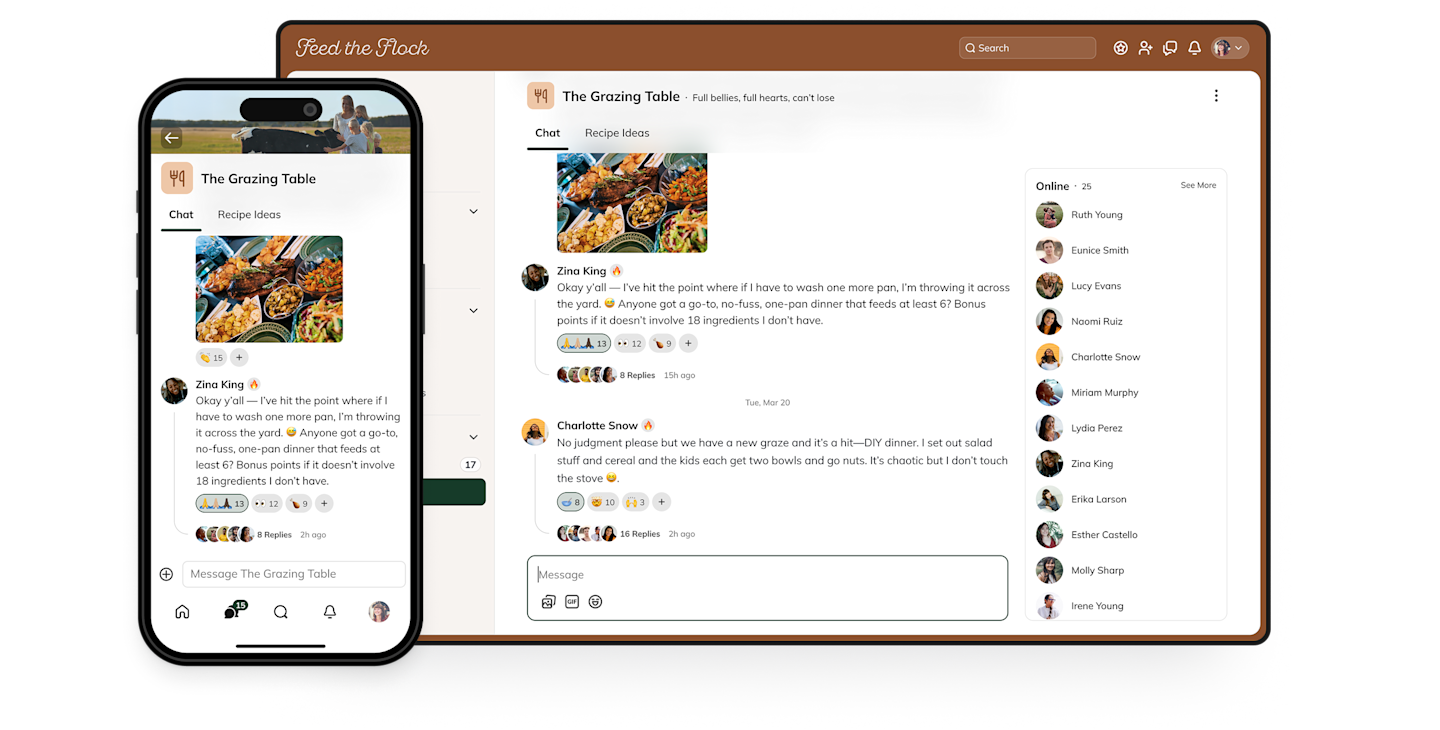
2. Choose your community’s “Big Purpose”
While step 1 covers your reasons for creating a community, a “Big Purpose” is why your members will join and participate in your online community. A Big Purpose is captured in a single sentence with 3 simple parts.
It’s CRITICAL to have your Big Purpose before moving forward with anything else. In other places, this might be called a mission statement, but we love the focus on PURPOSE behind every community.
And there's a secret successful communities share.
The best kind of Big Purpose focuses on people who are going through a transition.
Here’s your Big Purpose sentence:
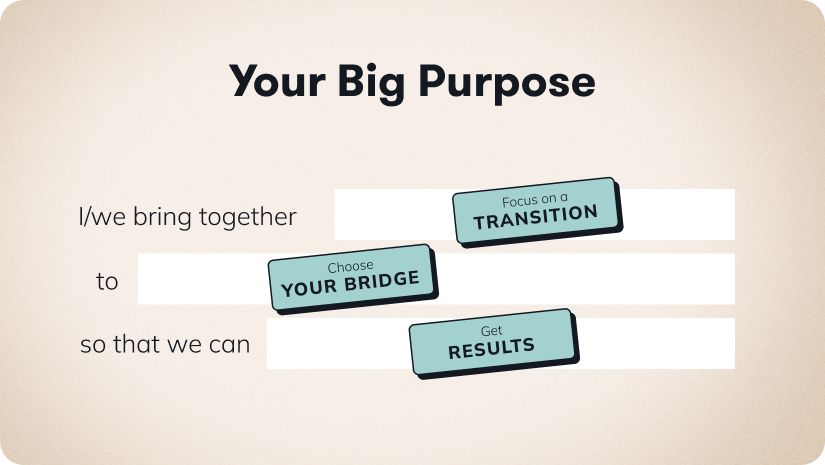
As you can see, this is a simple sentence. It’s designed to be. Knowing a few things up front, will make it even more powerful once you start using it:
a. A specific person in transition
Pick ONE person to help. Don't try to be everything to everyone.
Even if your community could apply to almost anyone, pick one clear segment first. Narrow it down til it stings a little.
Here's the sad truth. A community built for everyone is a community built for nobody.
For example, “Single dads who are starting an online business for the first time” is better than “people running online businesses.”
b. The bridge
People pay for progress.
Identify the bridge that will take your members from where they are to where they want to be!
c. The results!
Finally, help members dream big! Where will they be after the transition? Will they have a thriving business? Know how to cook vegan? Have mastered meditation?
Members need to see where they're heading.
If you're launching a community, try our AI-powered community name generator! Mighty Co-Host™ runs on Chat GPT and can create a Big Purpose, community name, brand, landing and sales pages, and more. Try it!
AI Community Name Generator
The real secret of this generator? It doesn't just generate names. It can also build your community website!
The magic starts with a few words about your community. Who will you bring together? What are their shared interests? Goals? Dreams? Give us a few words and we'll create some amazing ideas.
The names generated by Mighty Co-Host™ are examples only and may be used by other businesses or subject to third-party rights. For more information, check our Terms
3. Define your Ideal Member
Let's come back to your Ideal Member.
You need to narrowly focus your community to 1 person who needs what you have. RIGHT NOW.
Here's how to find them.
Do a series of 30-minute interviews with 10-20 people who represent folks you want to serve in your community.
What transformation do they dream about?
What fears hold them back from getting it?
What knowledge to they need to get it?
How have they failed to achieve it in the past?
What would the transformation be worth to them emotionally?
What would the transformation be worth to them financially?
The more that you listen for the language they use and the things they care about, the better you’ll be able to build an online community around what’s most important to them.
If you can choose one, narrowly-defined Ideal Member, and you understand the transformation they want, you're off to the races.
Remember, you're choosing one Ideal Member for now. It doesn't mean you'll never serve anyone else or work on anything else.
But this focus is critical as you get started.

4. Plan their Best Year Ever
If you could give your members what they want 1 year from now--that's 12 months--what would their life look like?
What are they able to do in a year that they can't do today?
What would make it the most memorable year in their life?
What would a day in their life look like?
Dream big for them. Really big.
The Best Year Ever isn't about being "realistic." It's about creating a huge, aspirational dream that challenges and inspires your Ideal Member.
Once you’ve written down these specific, vivid details about your members after a year in your community, then you can work backward. What would be relevant “themes” that someone on this path would be interested in exploring? What are the weekly or daily habits that would ensure that your members have achieved their goals?
This “year in the life” is the foundation that you’ll use to come up with the calendar of activities for your community we’ll talk about next.
5. Organize a weekly calendar and monthly themes
You know where you want them to be in a year. So now, get practical and fill in the framework that will help them get there.
This is the nuts and bolts. We like to think about:
Monthly Themes: Choose a focus each month that is part of your members' transformation.
Weekly Activities: Set up the regular things in your community that you'll fill with the activities members need: challenges, discussions, livestreams, office hours, masterminds, and so on.
With most community software today, you can even schedule these weekly events ahead of time.
When you have a weekly calendar, you and your members will get into a rhythm, which also means that you’re more likely to build your community into a habit among your members.
Then, you can use the novelty of monthly themes to keep your community interesting and moving forward, feeding the theme of the month into your weekly calendar activities to strike the right balance of habit and excitement that characterizes the best communities today.
6. Choose a platform
Why you need a community platform
Your online community software matters. It's make or break. We see it all the time. Communities are limited by their software.
(Facebook groups can be good for very small friend groups or very broad fanbases, but they suck for engagement).
Slack isn't built for communities, it's built for offices--people who are forced to log on.
Not surprisingly, most communities on Slack or Facebook fizzle. Have you experienced this?
A dedicated community platform helps you launch, monetize, and grow a community without fighting an algorithm.
This means connecting community, courses, content, and payments under your own brand across every platform, including your own native mobile apps and spot in the app store.
What to look for in a community platform
It's pretty simple, really. Many platforms have some of the features below. But a world-class community platform has ALL of them. These are the features that make your brand amazing.
Admin Features The tools to manage and even automate your community:
Member management
Create plans and bundles
Get detailed analytics
Access powerful automations and AI tools
Branding features The tools you build YOUR brand, no someone else's (and especially not a social media company's)
Customize to look and feel like your brand
Light & dark mode options
Create personalized experiences
Host on branded apps
Engagement features The tools to serve and engage your members in pretty much any format you choose.
Get custom activity feeds & notifications
Host exciting virtual events
Livestream to your members
Chat & messaging
Host rich discussions
Sub-divide your community into Spaces
Run email campaigns

Content options The features that let you AND YOUR MEMBERS create amazing content and share it. This is what makes a community thrive.
Share posts, images, and videos
Create polls and discussion questions
Automate discussions with icebreakers
Build rich new member sequences
Teach what you know with a course
Share long-form content (like an article)
Business tools
Sell products & memberships
Collect payments in different currencies
Create plans & bundles
Build landing & sales pages
7. Share your community with the world
You’ve now got everything you need to share your online community with your ideal members. If you’re starting with an existing email list, online course, or group, recruit a small team of 1-3 people to help you share it with the right initial people. Once you’ve got your squad, pick a day that you’ll officially open your community to your founding members by scheduling a live “kick-off” video event on Zoom or Crowdcast where your members can meet each other.
Then, work backward 2-3 weeks from your kick-off event to announce your community to your initial members and begin the share period where for those 2 to 3 weeks you shout about your community from the rooftops.
Does the idea of shouting about your community from the rooftops make you a bit nervous?
You’re not alone.
That’s why you’ve recruited a squad to help you share your community, and why we created our own community of creators just like you learning how to build an online community at Mighty Community. When you realize that you’re launching your community in a supportive spot with others just like you, something magical happens. There’s no reason to do this on your own.
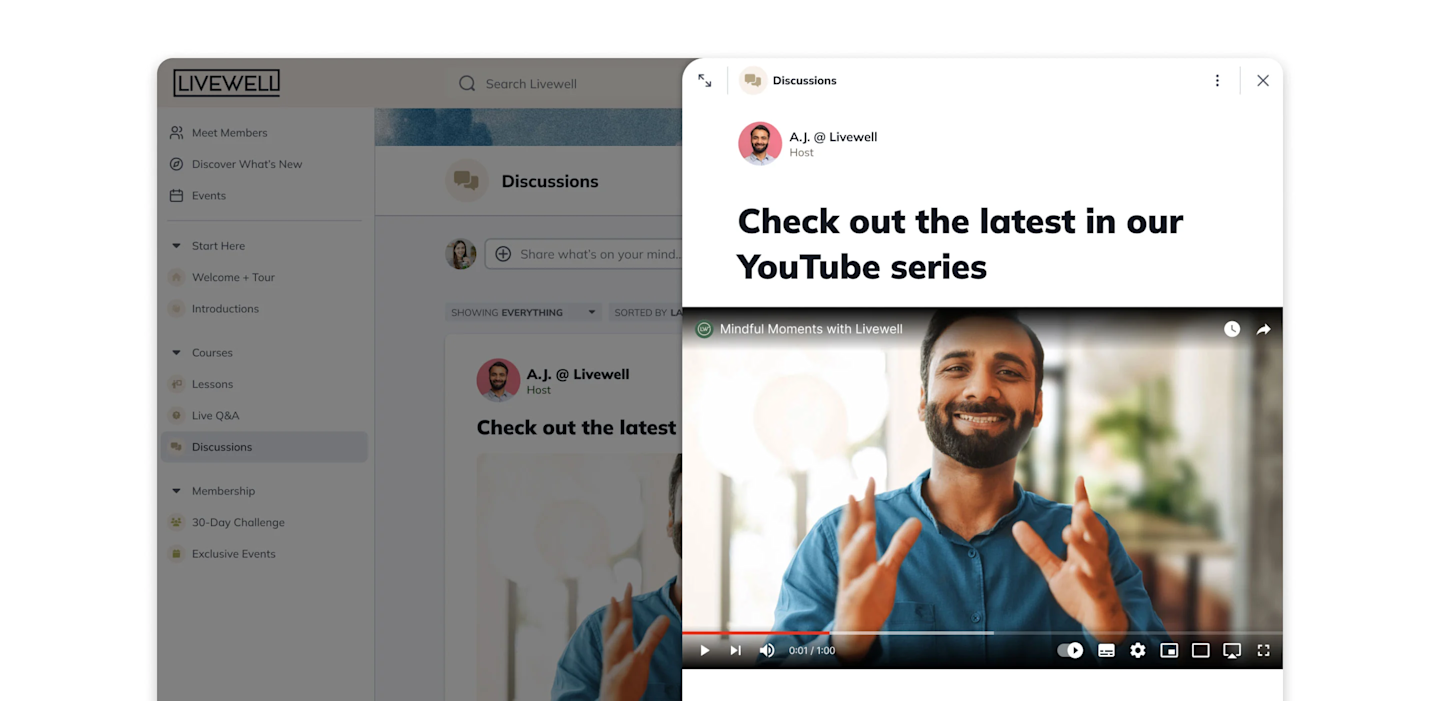
8. Just start
At this point, you have everything you need to build your own thriving online community. But the knowledge of how to build an online community isn't the same as just doing it.
For many, this a potentially nerve-wracking proposition! Some of the most common hesitations we hear are:
What if I share my community and no one joins?
What if it’s too much work for me?
What if people are too busy or don’t want to try something off Facebook?
It’s normal to have some fear around offering a new community. It makes you human.
But here’s what we’ve learned watching hundreds of thousands of successful online communities thrive: the probability that any of these will happen is low. If anything, with the right strategy and software platform in your corner, you can create a community so valuable you can charge for it and so well-designed it essentially runs itself.
The key things upfront are to embrace experimentation, stay curious, and reframe your fears into a fun puzzle to solve. There isn’t a single thing you’ll be doing in building your online community that someone else hasn’t faced before you and overcome.
Your mindset will make all the difference.
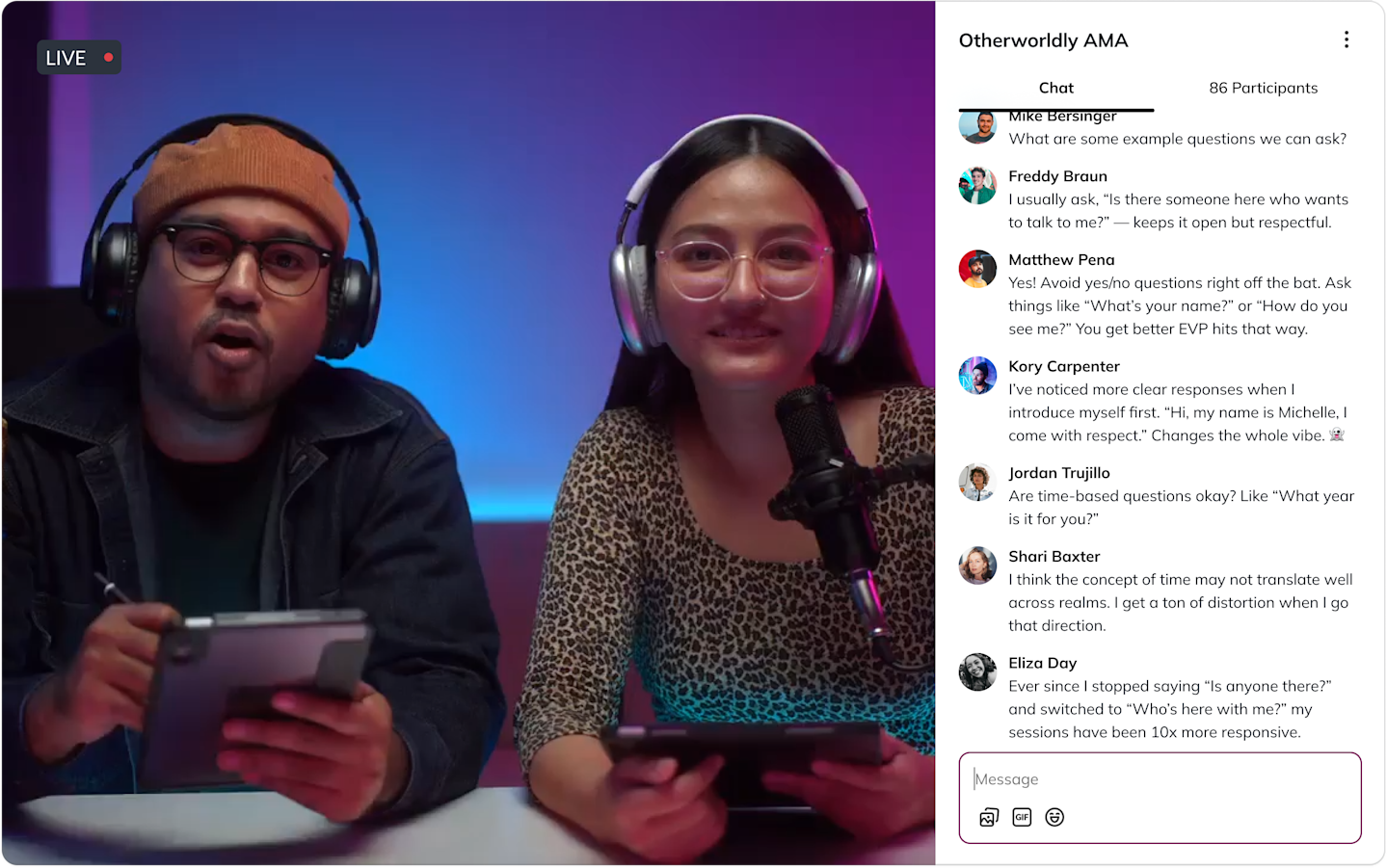
9. Keep going and learning
Test everything
Want more members to join? Ask yourself if there is another profile of people who would be more motivated by your Big Purpose. Then, start over again with ideal member interviews of this new group. Repeat the process.
Want more engagement from your initial members? Go back and test whether people know what awesome results they’ll get from being a part of your community. Then, make sure that as you deliver your weekly calendar the ways your members are expected to contribute is as clear as possible. Sometimes, people aren’t actually busy. They just don’t know what to do next (even when you think it’s crystal clear).
The point here is that when you build an online community, there’s always something new to try and discover. People may be messy, but they are also amazing.
Dive deep on analytics
Your community platform should come with analytics, and these help you learn and grow. Your analytics should give you actionable data to see what's working and what isn't in your community.
You can see where members spend their time.
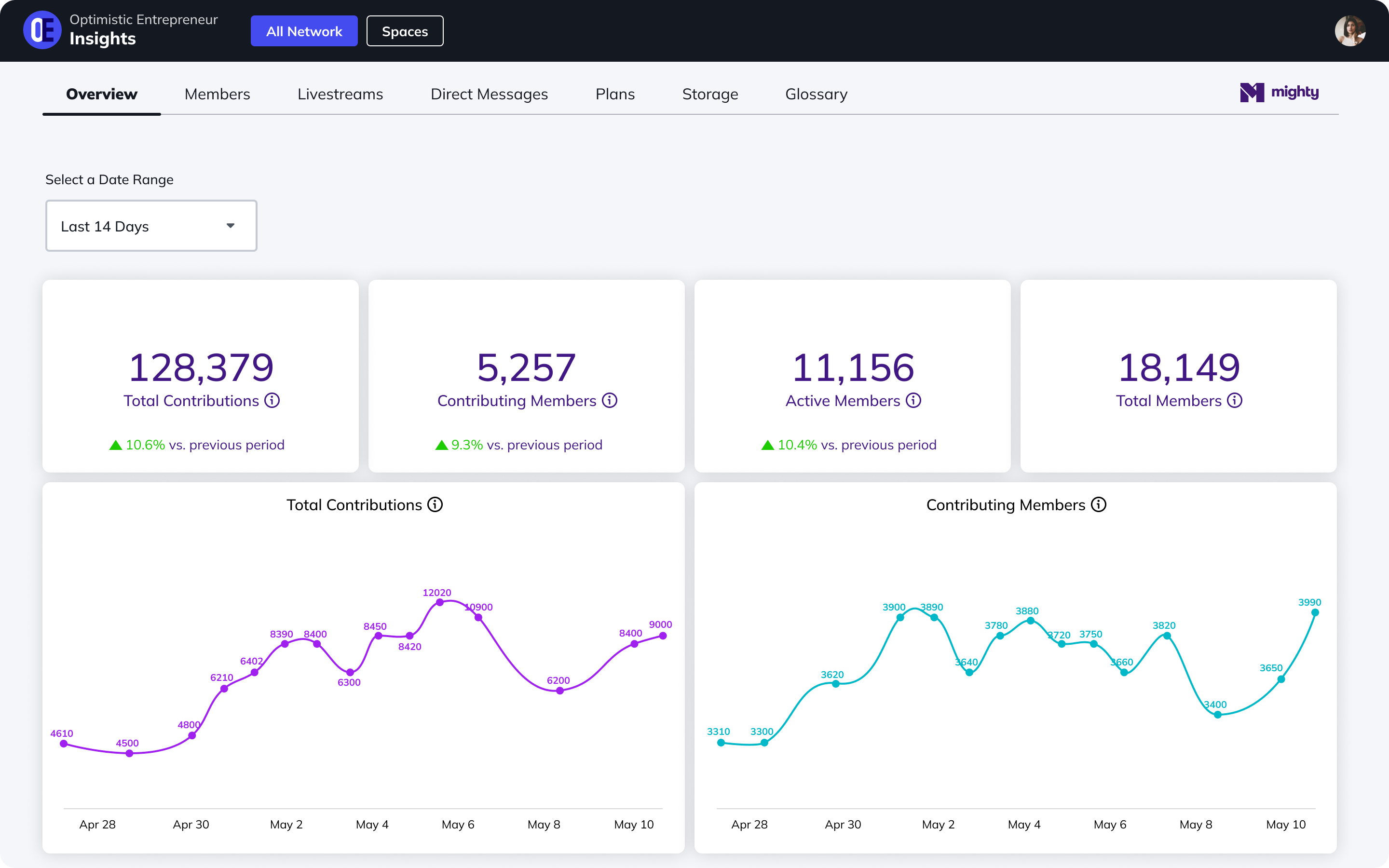
Understand lifetime value
Your member lifetime value will be an important metric for your community--assuming you've got a paid membership community. A community platform should give you this number, including your churn rate (the percentage at which members drop off).
This gives you a way to predict and calculate recurring revenue, but it also helps you understand how much you can pay to acquire a member.
Ask your members
Finally, if you want to know what's working, you can ask your members! There's a reason you've built the safety and trust in your community.
Most will be willing to tell you what they think. You can also create polls to make it a bit more anonymous to give feedback. And of course, you can build a more comprehensive anonymized survery if you prefer!
Use all the tools at your disposal to figure out what's working and what isn't.
Building an online community
What you need to know...
Community business examples
These are some of the real examples we've seen from brands building an online community.
A faith-based community expanded to 470 leaders in 67 countries.
An entrepreneurship organization launched to 5,000 members in 2 ½ weeks.
A health-focused launch to 100 high-ticket members added $40,000 in ARR.
An author & speaker launched a 4-week promotion and saw an additional $30,000 in revenue.
A podcaster and author sold 5,000 seats to a $997 course in 10 days.
One community launched a 13-week add-on course and generated an additional $100k in revenue in 2 months.
One social impact SAAS company mixed Pro with their regular conferences and saw a 70% increase in contributions & engagement.
These are the success stories we see again and again with brands that build online communities. If you're not, you're missing out.
Types of online communities
There are different types of online communities. And while they have a lot of the same fundamentals, the structures are different. We have a full post dedicated to the types of online communities, but here's a quick overview AND some examples:
A mastermind group: Founded on the philosophies of Napoleon Hill, mastermind groups bring people together to share experience and advice on entrepreneurship, career and personal development, finance, and even parenting.
Group coaching: In this online community model, a coach or expert teaches in a group. But members benefit from sharing inspiration and accountability with the group. For inspiration, check out The Village by Happily Family, a group coaching community for parents started by Cecilia and Jason Hilkey.
Coaching community: Group coaching is amazing, but 1:1 coaches also use communities to support their clients between sessions. If there are no privacy issues, community can be an awesome supplement to coaching.
Micro-community: A small community with less than 30 people, and the results can be epic. Usually a much higher price point and super well-defined niche. For example, Kathleen Drennan's 6-week #ForFlorists Business Masterclass is an amazing case study in micro-communities.
Content community: Who says bloggers, video creators, photographers, or designers need to flock to social media? Content communities bring creators together to share, learn, and grow.
Online brand community: An online brand community or customer community brings people together for the love of a brand--to connect, learn, and even get product support. For examples of online brand communities, check out Lego's builder community.
Online forum: Forums on their own are a bit dated, but most communities have a forum component for asynchronous discussions.
Communities of practice: For professionals, communities can be places to connect with practitioners and share knowledge. For example, QPractice is a community that connects interior designers.
Learning communities: Running an asynchronous or synchronous course? A community can make the material stick.
Event community: An event community is a great way to host thriving virtual events or to keep the magic of an event going year-round.
Shared purpose community: Most communities fit this model, but a shared purpose brings people together because they want to transform, grow, or even just talk about a common interest.
If you're building an online community and you want some inspiration, definitely check out our case studies library for more!
Reasons to create a community online
Finding connection: A generation of people who are more connected than ever are also lonelier--For example, a recent study found that 46% of people in the UK report feeling lonely sometimes, often, or always. The cure is community--research shows we need deep, real social networks (not doom-scrolling Twitter).
Focusing attention: Building an online community can generate the magical, life-affirming, brand-affirming, passion-affirming value each and every member of your community gets from being a part of a thriving network. And there are no distractions, just focus.
Personal growth: Research suggests there's a strong link between social support and personal development--and we see it in communities. Building an online community helps members learn new skills and reinforce new habits with accountability and support you won’t find anywhere else. And you'll grow as a leader too!
Teaching what you know: Teaching and learning works better in community. If you're running an online course, you'll see better results and completion when you connect it to a community.
Mastering something in a group: Whether it's painting with watercolor, speaking Mandarin, or learning email marketing, community is a great way to master something. Walking with like-minded people on a learning journey is unlike anything else.
Host REAL conversations: Conversation has been driving community since AOL chat rooms and dial-up modems. And modern community platforms do this better than ever.
Monetize: Whether you're earning your first dollars--turning followers into members or monetizing content--or launching a million-dollar brand community, communities generate consistent recurring revenue and member value like nothing else. We'll break this down more below.
Positive energy: 64% of Americans say social media has negatively impacted the world or their mental health. Where social media is designed to get us angry and addicted, online communities thrive on joy and excitement... When was the last time you experienced positive energy online?
Why community is the ultimate business
Building an online community has become a powerful business model, with McKinsey identifying "community flywheels" as the best growth business for the 2020s.
So yes, creators can use community to earn more per follower than any other monetization method.
But for brands and businesses, launching customer communities will take your business to the next level.
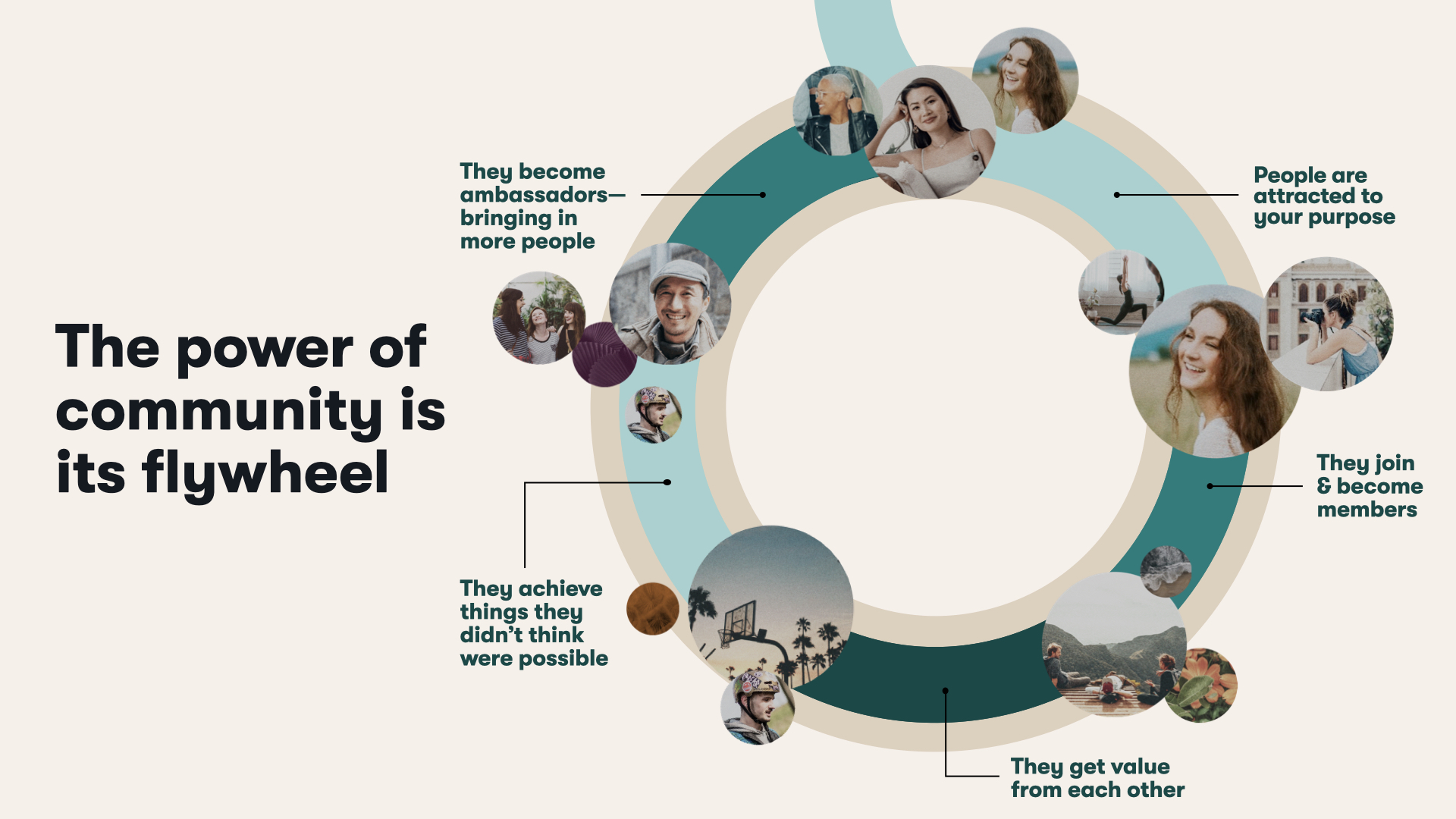
We believe that the next generation of high-growth companies are going to be the ones that can convert customers, users, subscribers into members. These are brands that take people out of the transaction mindset and help them belong.
Membership is the ultimate relationship. It’s at the top of your value ladder. So evolving your brand's relationships from customers, to subscribers, to users, to members.
That's where the magic happens: member-led growth. Or, as we like to say, a business that builds itself.
Because it really does happen. And it's mind-blowing when you see it! Imagine...
your members making sales for you
members answering other members' product questions
members telling you what they want from your brand
instant feedback on new products OR product ideas
effortless selling
As McKinsey says, brand communities see effortless selling in a community built around their brand story, and that's unlike anything else you can do in business.
Ready to create an online community?
If you're looking for a home for your online community, come build with Mighty! Mighty Networks is a unified member platform that brings together content, courses, community, and commerce.
Here's what you get with Mighty:
Discussion forums, text & articles, video content, livestreaming, and more built-in
Intuitive course platform with a versatile LMS, course communities, course discussions, live events, and all-member chats
Branding flexibility. Make your community look and feel your own, light and dark mode, custom titles, tags, urls, and landing pages.
Unlimited members, admins, and moderators on every plan.
Sell memberships, bundles, or one-time products in 135 currencies globally or with token-gating and get analytics on where people are going.
Your community on a beautiful native app that works for every device
Integrated community AI (Mighty Co-Host™) can instantly create course outlines, "make it better" text editing, generate discussion questions, landing pages, and member profiles.
Seamlessly sync with your ConvertKit email tools.
Access tons of free support in the Mighty Community.
Build your own branded app in the app store! You get all of the above, but YOUR notifications and brand. It's your logo. Your app.
Creating an online community is simply putting together the right pieces in the right format to unlock something magical.
You've now learned how to build an online community, and you have all the pieces at your fingertips.
Take the first step. It's free to try for 14 days--no credit card required.
FAQs about building an online community
Is there anyone who shouldn't be building an online community?
This is an equally important question to tackle, especially for someone just getting started with an online community.
If you're wondering how to build an online community, we should tell you when it doesn’t make sense to build an online community that connects people to each other:
You want to create content-not conversation: Building an online community will present you with new stories, ideas, and experiences you can incorporate into your blog, your content marketing, your weekly email newsletters, the book you’re writing, or the online course you’re building. In fact, a community makes your own writing easier because it gives you more material.
HOWEVER, if you find the solitary practice of writing (followed by counting the open rates or page views) to be your happiest place, you may find building an online community doesn’t deliver the energy, joy, or inspiration to you in the same way as it delivers to other creators. After all, there’s much more to a community than just writing posts.
It doesn't fit your personality: We’re not all wired the same. Some of us get energy from being with others. Some of us find it draining. If it doesn’t sound motivating or inspiring to bring people together who are passionate or curious about the same topic, that’s okay. It’s not a requirement to build an online community, and if you’re not someone who gets joy out of engaging with people, it might not be right for you.
But it should be said that some introverts LOVE online communities because they give them the freedom to engage as they have the energy and the time.
You're not in it for the long term: We're not saying you need to commit for the next 10 years, but building a thriving community will take some time. Don’t expect to pop it up, cash out, and leave. While building a great community doesn’t necessarily take a ton of work, it does take some time. Plan to invest a bit of effort for at least a year in making your community thrive.
Your customers don't want it: There might be some cases where your customers or fans don’t really want or need to be in community with each other. It might not make sense to try and force an online brand community around something that really doesn’t require relationships.
But be careful making assumptions here. There are thriving online communities based on everything from planting succulents to mastering accounting software, so there are a lot of possibilities.
It doesn't fit your business goals: If you can’t connect building an online community to an immediate goal you have right now, that’s okay. It’s always better to focus on the goal and build a plan that evolves from the objective. If an email list or a social media post will get you what you need faster, by all means, do that.
What is a learning community?
A learning community is a group of people who come together with pedagogical goals. Having a community of learners can improve learning outcomes, especially for adult learners, as students get support and encouragement from the community and learn by engagement.
In some cases, learning communities can supplement online courses, serving as discussion or practice groups. This can be a great way for students to learn and grow together, and discussion, group projects, etc., can cement the online learning goals.
But it's wrong to think of learning communities as only existing in relation to online courses. Almost every online community could be considered a learning community, since any thriving community brings members together, helps them share knowledge, perspectives, and experience, and moves them toward a common goal.
Here are some cool examples of learning communities on Mighty:
Ashley Fox's community dedicated to teaching personal finance to the people Wall Street doesn' talk to (we mentioned at the intro): Wealth Builders Community.
Ryder Carroll's community that grew out of his approach to note taking. Ryder struggled with ADD and realized that his unique notes--"bullet journaling"-- really helped him. He started a community called BuJo Uthat teachers others.
These three examples show that learning communities are so much more than discussion forums that are connected to online courses, but add in live events, livestreaming, teaching content, questions, and more!
And why build a learning community? If you're really set on a synchronous course, a learning community can help make it stickier. But also, thriving learning communities can do just fine without the course, helping people master something important to them.
What is a brand community?
We referenced it throughout this article, but a brand community is a group of people who gather around a shared passion for and interest in a brand and its products.
A good brand community can create brand loyalty, a shared identity, learning opportunities, and a sense of belonging. And of course, members can get product knowledge and help.
For example, Apple's brand community brings together members who share technical knowledge--their community does the technical support! And they've gamified the whole process to it's fun. Or how about Lego's community, where members can share their builds. The best ones even get picked to become Lego official builds.
A brand community at its best acts as a community flywheel that takes your story, turns it into a member-led growth business, and makes selling effortless.
We have a full post with lots of brand community examples here!
Ready to start building your community?
Start a free 14-day trial to explore Mighty—no credit card required.
More like this
Join Mighty Community
Learn the principles of Community Design™ (and see them in action) alongside thousands of creators and entrepreneurs. It's free to join!

Online Courses
Creating a Course
Teaching a Course
Course Platforms
Selling a Course
Communities & Memberships
Community Platforms
Managing a Community
Building a Community
Growing a Community
Monetizing a Community
Content Creation
Creators & Entrepreneurs
Monetization
Content Creation
Starting a Business
Website Builders
Creating & Managing a Website
Events
Event Platforms
Hosting & Marketing Events
Branded Apps
Creating a Mobile App
Coaching Apps
Community Apps
Coaching
Mastermind Groups
Starting a Coaching Business
Coaching Platforms
Filter by Category
Online Courses
Communities & Memberships
Creators & Entrepreneurs
Events
Branded Apps
Coaching
Build a $1 Million Community
This free masterclass went viral—sign up to learn why.







